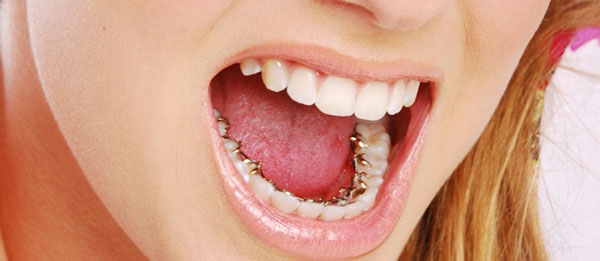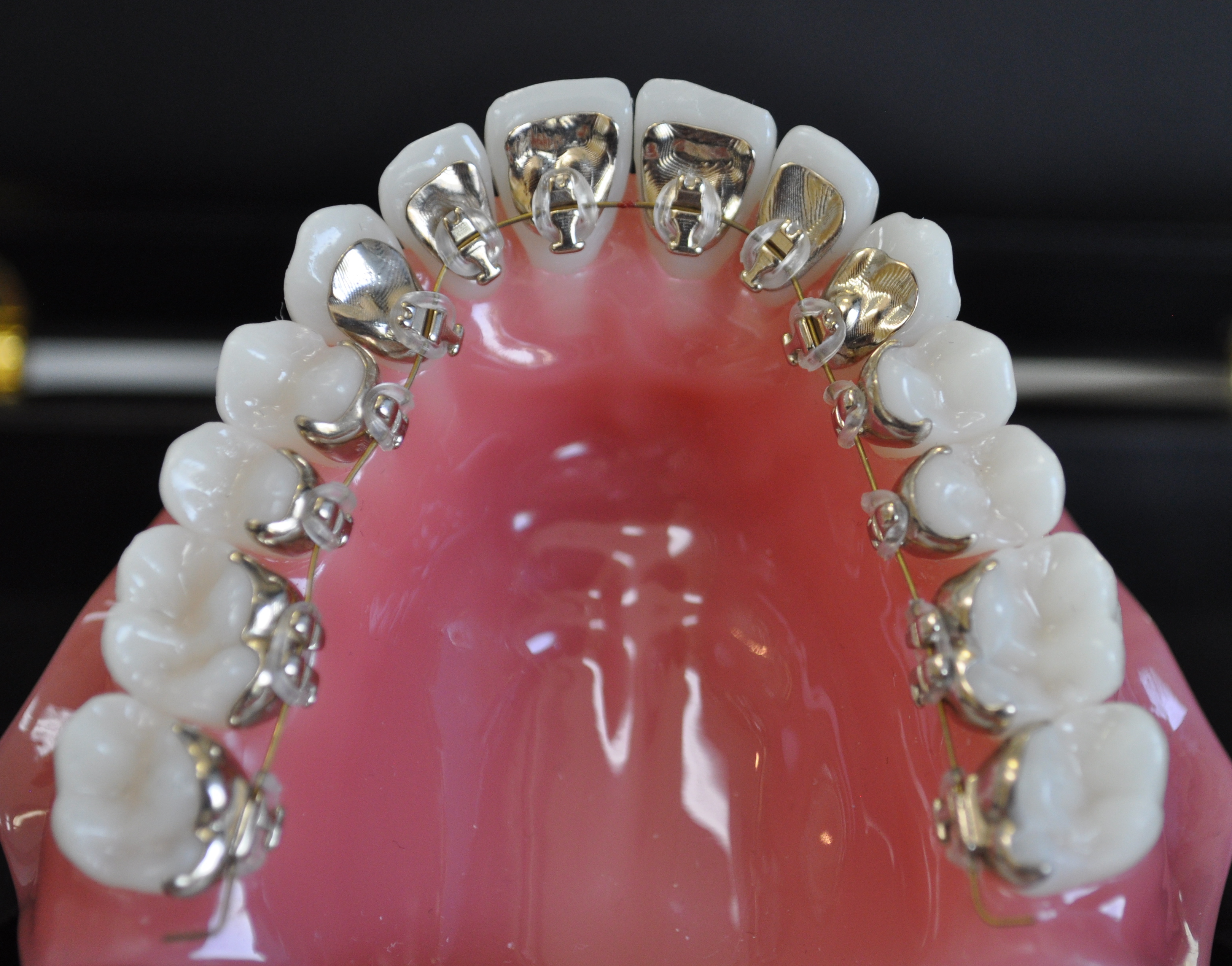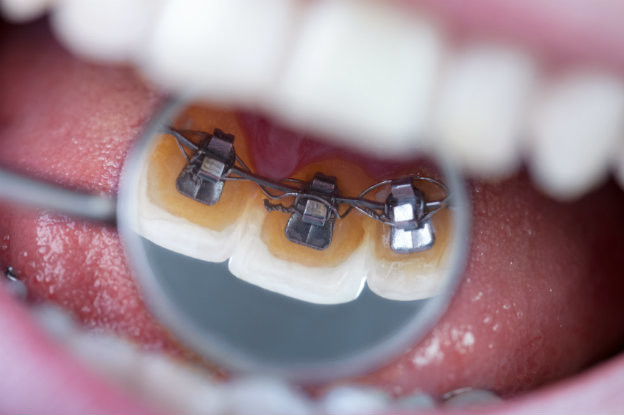While conventional orthodontic procedures are essentially metal appliances that are worn over the teeth, lingual braces and fast orthodontic treatment such as Inman Aligner braces are different; but why? Let’s take a closer look.
Pushing, pulling, or both?
Traditional modern braces may appear more discreet than metal ‘train-track style’ braces of old with ceramic brackets and tooth coloured wiring but despite this, it’s likely that someone will still be able to tell that you’re wearing an orthodontic appliance. This is because there’s no getting away from
that distinctive (although tooth-coloured) wiring that spans the length of your teeth. However when you opt for lingual braces, all the action cleverly takes place behind the smile. (Lingual means tongue in Latin). In this case, small brackets are skilfully secured to the rear of the teeth and the wiring is the threaded through the brackets, so everything is controlled from the rear. What this means for the wearer is that nobody has to know they’re wearing them because there is no ‘tell tale’ sign when smiling or speaking. They work in the same way as conventional braces in that they move teeth by applying gentle force. However, rather than applying force which gradually pushes the teeth back into position, lingual braces can effectively pull the teeth from behind.
Conversely Inman aligner braces utilise a different technique. Instead of either pushing or pulling teeth back into position, the Inman aligner uses two spring loaded titanium bows which work together using force and motion to simultaneously push and pull the front teeth back into position. The result is a greater possible array of movement in a quicker time. In fact, if a person was looking for a speedy way to straighten their front upper and/or lower teeth, then fast orthodontic treatment doesn’t really get any quicker, with treatment taking on average 8-12 weeks to complete.
Quick, quick, slow
Despite their differing advantages over conventional braces both lingual braces and the Inman Aligner have their disadvantages. Like many traditional style brace systems, the lingual system is what’s known as a full-term appliance. What this means is that it can correct a wide range of orthodontic problems, including bite issues and realignment of the tooth root, over a long period of time (usually somewhere between 1 and 2 years). However because the appliance is attached to the back of the teeth, it often takes a lot more ‘getting used to’ when it comes to speaking – particularly the correct annunciation of certain words and vowels.
Alternatively, while the the Inman aligner is arguably easier to get to grips with, because of the way it’s created, it’s designed specifically to fix certain teeth only. Namely the upper and lower front six teeth. Therefore for those with crowded or problem teeth situated at the rear of the mouth, the Inman aligner isn’t really an option.
That said, both the Inman Aligner braces or lingual braces work to great effect in their specific areas of expertise. So if you’re not happy with your smile and are considering full-term or fast orthodontic treatment, then come and talk to our professional team who can advise. Why not book a consultation by calling 0161 660 1218. Here you can get all your questions and concerns answered and gain all the necessary knowledge you need to make a fully informed dental decision.








